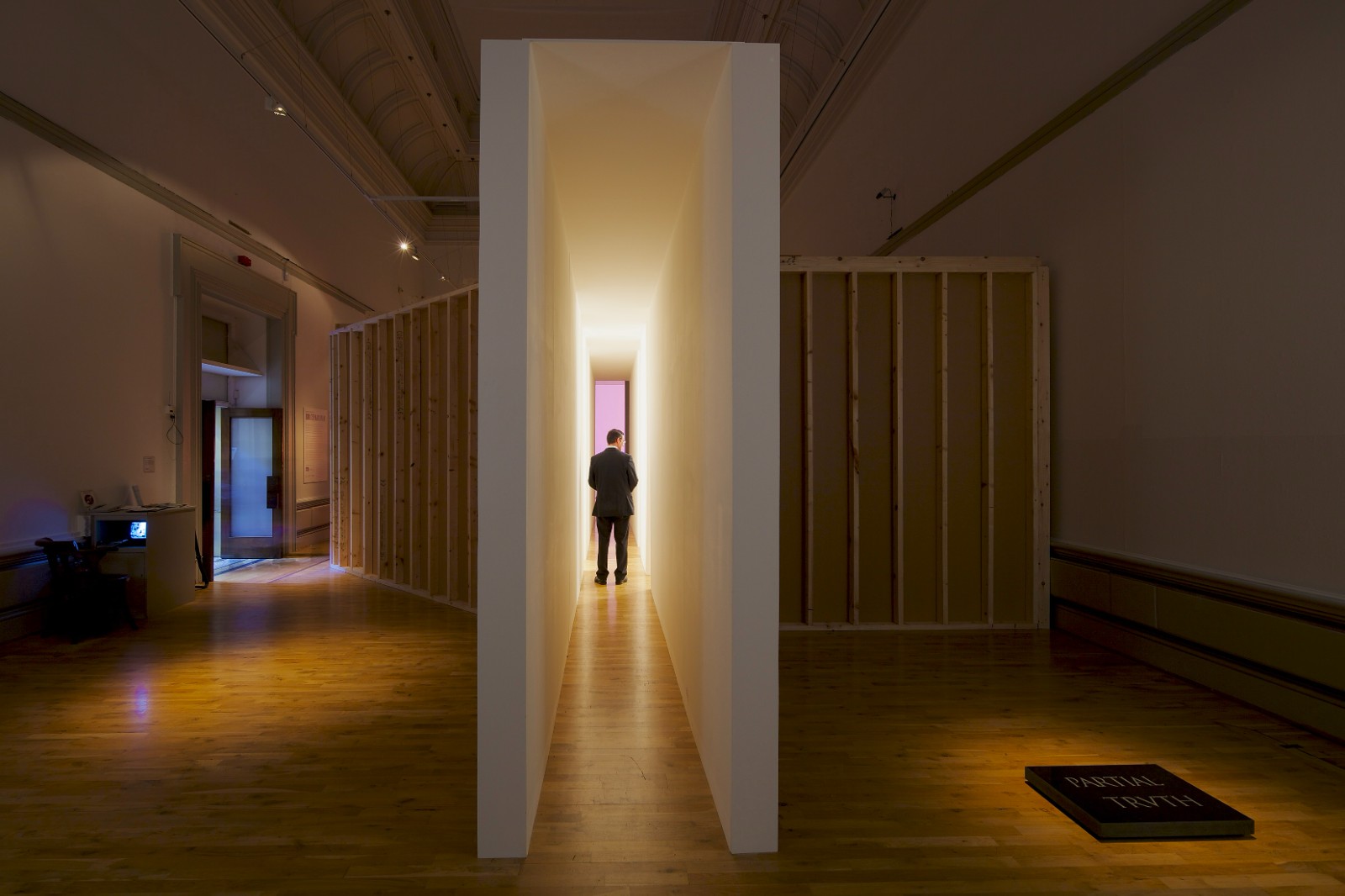
Exhibition View
Nowadays, “body” has become an important keyword in contemporary art. Bruce Nauman who just turned 80 has experienced this trend by himself. M WOODS Museum, in collaboration with the Tate Modern and the Stedelijk Museum, presents China’s first and most comprehensive overview of the work of this American artist Bruce Nauman.
 Bruce Nauman 2021
Bruce Nauman 2021
Photo by Zoe Nauman. ? 2022 Bruce Nauman / Artists Rights Society (ARS), courtesy Sperone Westwater, New York
Unnoble Object
In Nauman’s Self-Portrait as a Fountain, a renowned work in his earlier period, he was topless and spitting water out like a fountain. It is one of his Photographic Suite of eleven photographs based on puns, meanwhile it constitutes a complicated chain of a signifier. At one end of this chain lies the history of modern art Nauman paid tribute to Duchamp’s Fountain, and he took a further step on the path of modernism’s continuous exploration with the moving image installations; at the other end of the chain is the subject of melancholy in Western and American styles, which ushers in the outbreak of symptoms in that era.
This melancholy, if explained in Freudian terms, does come from the decree of the superego. The most intuitive manifestation of this superego is the narrative of modernism. In the U.S. when Nauman was young, abstraction and formalism were among the most important terms. Freud used sublimation to explain the dynamics and economics of artistic production. Sublimation, however, is not only about art and intellectual work, but is also about the death drive. Was it necessary to repeat the example of Jackson Pollock? This star of abstract expressionism was destroyed by alcohol and a sports car along the road, becoming an allegory footnote to this determinism of artistic developments.
Bruce Nauman received art education in the United States in the 1960s when the movement of civil rights reached its peak. At the level of consciousness, it has profoundly influenced the self-perception of the entire Western world; while in reality, it has changed countless specific social rules, and a fact related to Fountain is that until this period, a large number of direct drinking faucets (which were used in exactly same way as Nauman’s performance) had just ended from the segregation restrictions. Revolt from diversified repressed groups heralds a complete ideology of modern subjects, what Derrida calls as phallogocentrism—which was challenged and accursed of the guise universality, as all the non-Western, non-white, non-male content were banished from the main stream of consciousness.
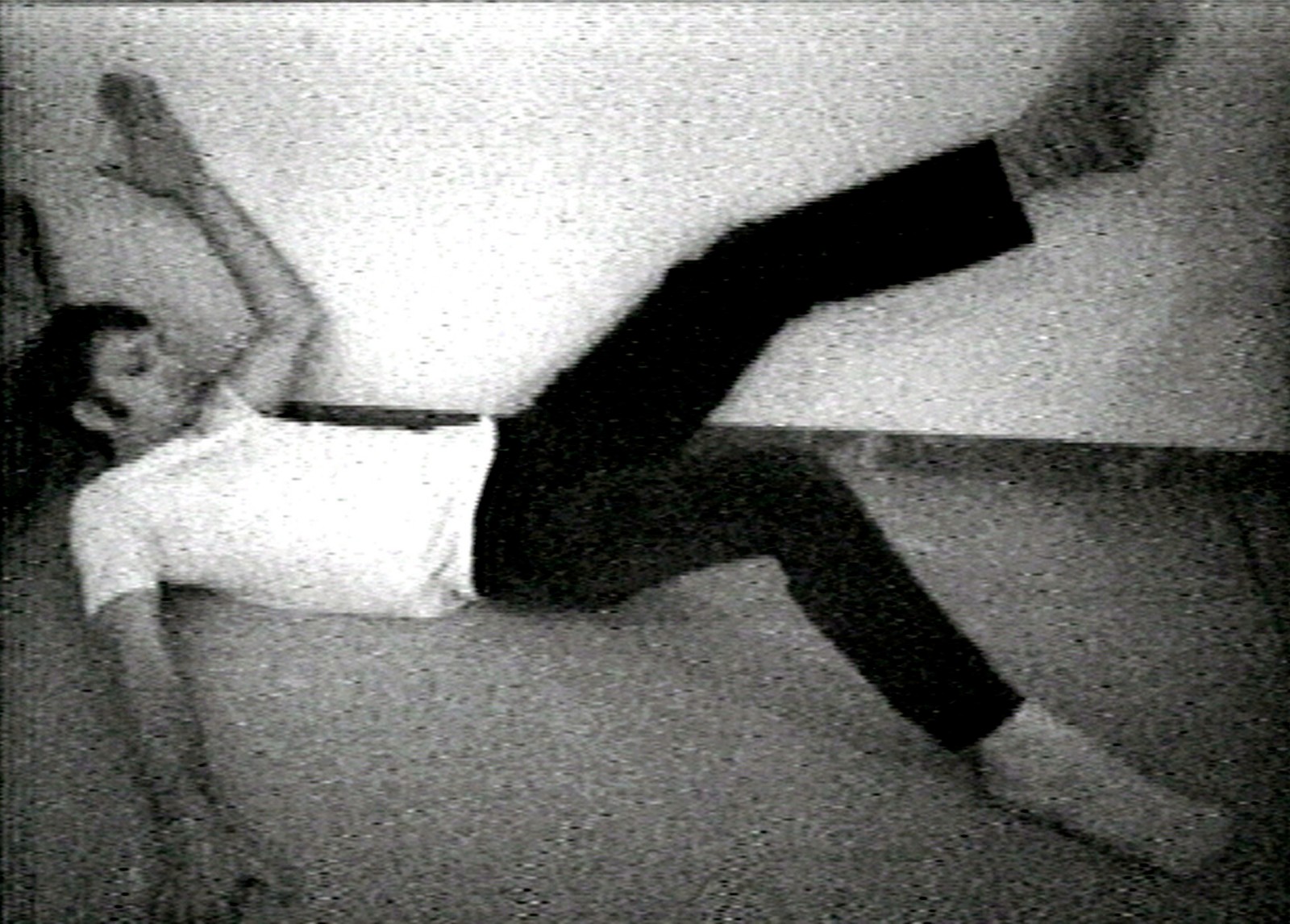 Wall-Floor Positions, 1968 ? 2022 Bruce Nauman / Artists Rights Society (ARS)
Wall-Floor Positions, 1968 ? 2022 Bruce Nauman / Artists Rights Society (ARS)
If there is one particular fact about being a white male on the theme of body, it is that no one can be immune to the myth of identity. For the artist, this means a set of prohibitions about the body. If an artist’s body is not allowed, or at least unexpected to be displayed—how many of the nudes in art history are self-portraits? Bodies in artworks are always meant to be worshipped, fascinating, awe inspiring or fearful, as they occupy the place of the object in the structure of desire.
Nauman however wanted to make a fuss about this, he pushed his own body to the front of the work: he walks around the edge of a square in an exaggerated posture, or in a posture of opposite balance...influenced by the European Gestalt psychology and phenomenology, Nauman places the body and its surrounding space (which should be regarded as “negative space” according to Gestalt theory) in the position of the object. Nauman’s moving image works can be aptly called “video sculptures”, as they are all devoted to constructing a stripped-down structure through video and other media, which incorporates the audience. Like sculptures and architecture, this was “done” in the process that visitors are watching and moving. In a specific sense, we are not watching the moving images, but we are swallowed up by them.
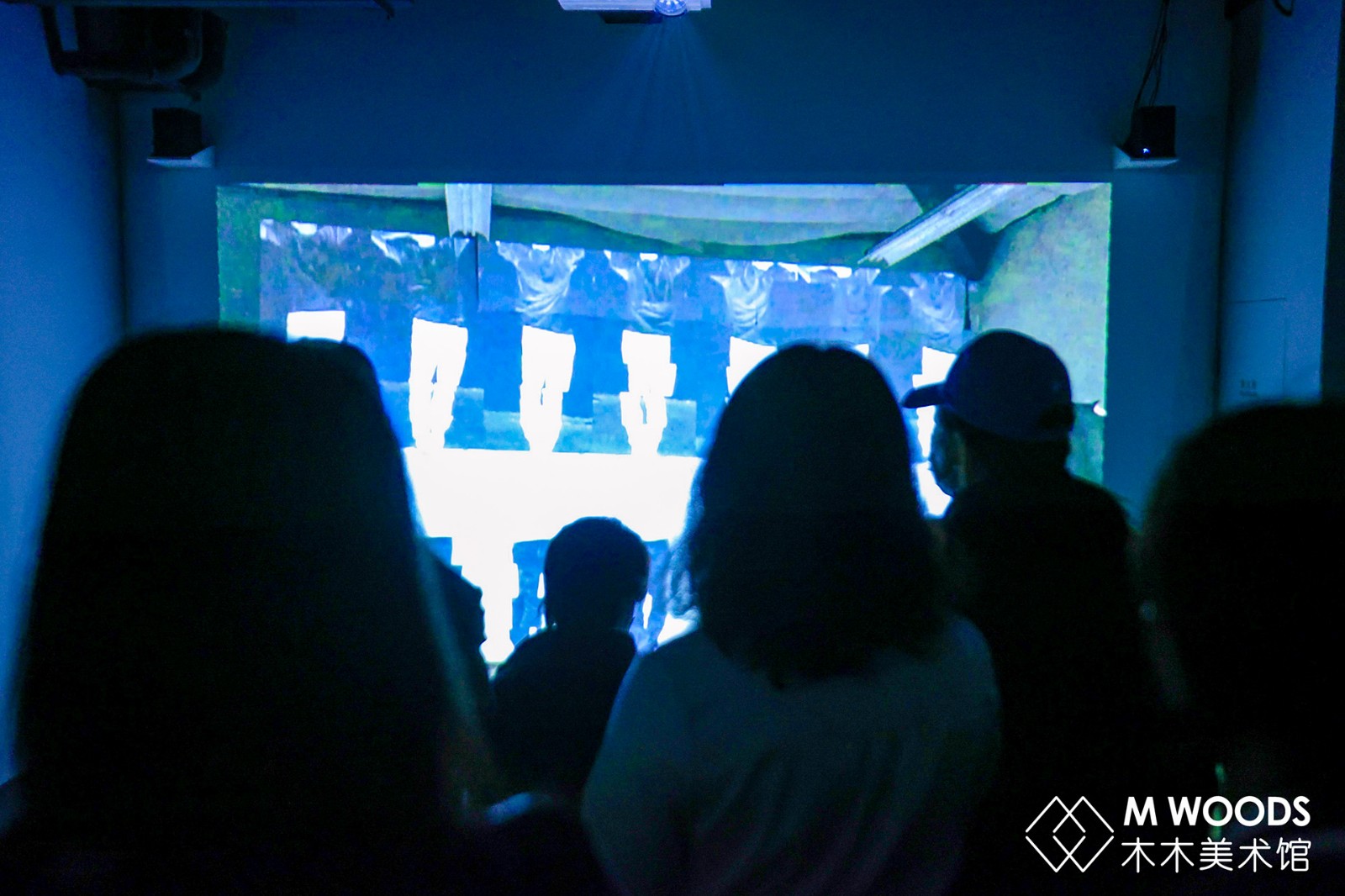 Exhibition View
Exhibition View
Hence we find ourselves confronted with a strange space: the movement of the characters in the image seems to oppress us. When Nauman from Walk with Contrapposto (1968) walks toward the screen with a sturdy, determined image, with what is claimed to be a classical step, what we find is the collapse of the traditional art object. Craftsmanship, beauty, sublime...these traditional terms fail, and in the end, we find to our disappointment that the body—the banal, ordinary body of artists and models, even our own bodies—is the object of art. Nauman brings this un-noble object close to us, even too close so it blocks the possibility of desire and fantasy. Therefore, we can understand why the curator of the M Woods Museum said that the exhibition was not “comfortable” at all, and for those who are used to the traditional visiting experience in a museum, an exposure to such a work is destructive.
Surveillance and Madness
 SW 88138 Going Around The Corner Piece With Live And Taped Monitors, 1987 ? 2022 Bruce Nauman / Artists Rights Society (ARS)
SW 88138 Going Around The Corner Piece With Live And Taped Monitors, 1987 ? 2022 Bruce Nauman / Artists Rights Society (ARS)
 Exhibition View
Exhibition View
Nauman is also undoubtedly a superb surveillance artist. Going Around The Corner Piece With Live And Taped Monitors (1970) uses a simple structure to create an installation for observing desires. When we walked into the aisle between the two walls, we saw an empty surveillance image (it was pre-recorded), and when we got to the end of the aisle and went around to the other side of the wall, there was an instant footage: a camera filming our backs when we entered the aisle. Ironically, since the immediate picture is cut off by a wall, this means that we can always only see the backs of the later viewers in the picture, while our own image is always invisible. Nauman showed American audiences the repressive nature of surveillance society long before Discipline and Punish was published. If Foucault’s account of the panopticon speaks of the discipline of capitalism today, Nauman reminds us that we are all prisoners in this prison, and we only need to turn a corner and we can start playing the jailer again.
 Clown Torture, 1987 ? 2022 Bruce Nauman / Artists Rights Society (ARS)
Clown Torture, 1987 ? 2022 Bruce Nauman / Artists Rights Society (ARS)
 Exhibition View
Exhibition View
Images and bodies can be used as part of an art installations, as well as materials for monitoring, censorship and application. Nauman foresees self-governance in the age of social media. Many scenes in Clown Torture (1987) would have unique effects among Chinese audiences familiar with short videos. The screen repeats some humiliating performances and close-ups of the clown’s emotional outbursts, blurring the line between hilarious and terrifying scenes. Nauman’s Clown is a psychotic construct, derived from the breakdown of the symbolic order and escape to fantasy. In the past, art provided people (of a certain class, race, gender) with a fantasy space, and today this task has been taken over by popular, social media, and Nauman’s art has become a way to break this fantasy.
 Changing Light Corridor with Rooms, 1971 ? 2022 Bruce Nauman / Artists Rights Society (ARS)
Changing Light Corridor with Rooms, 1971 ? 2022 Bruce Nauman / Artists Rights Society (ARS)
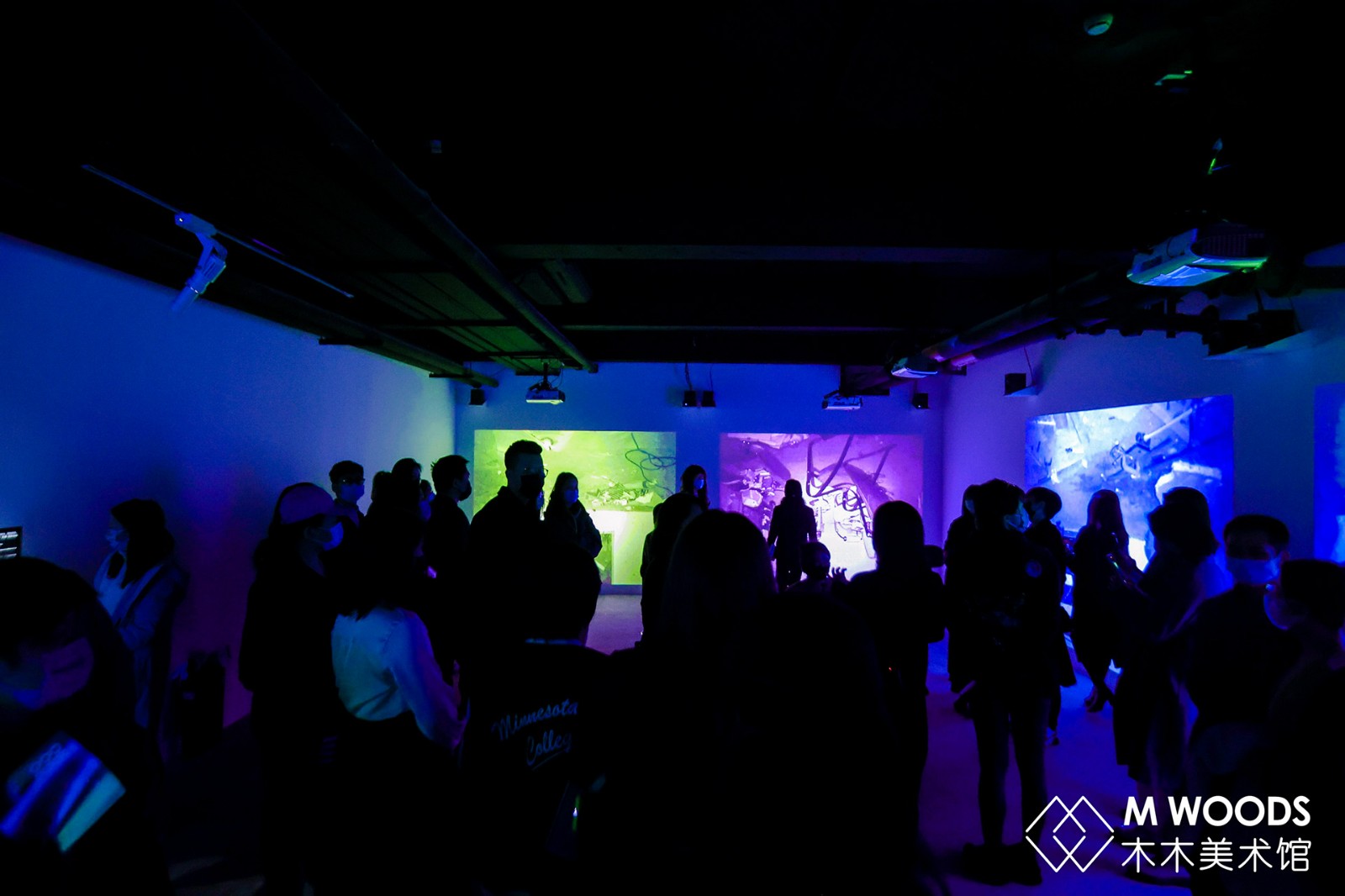 Exhibition View
Exhibition View
Can art still attract audiences today when viewing it is not pleasurable? In a video showing Nauman’s studio (2001), the exhibition quotes him as: “If I’m an artist, and I’m in the studio, then whatever I do in the studio must be art.” The artist no longer needs the presence of the body to give spatial order (the effectiveness of this symbolic order depends on the extent to which the audience recognizes the artist’s identity), but we can no longer obtain pleasure through the surveillance lens, the power of surveillance cannot satisfy our stare, thus it is replaced by doubt, stress, and claustrophobia. Like Nauman’s earlier video works, we find ourselves placed in a scene similar to Beckett’s Waiting for Godot, even the most basic plot in absurd theatre is missing. Godot did not come, we did not even know what would come, in this theater without any narrative, we are forced to recognize ourselves from the object of deprivation.
Difference and Repetition
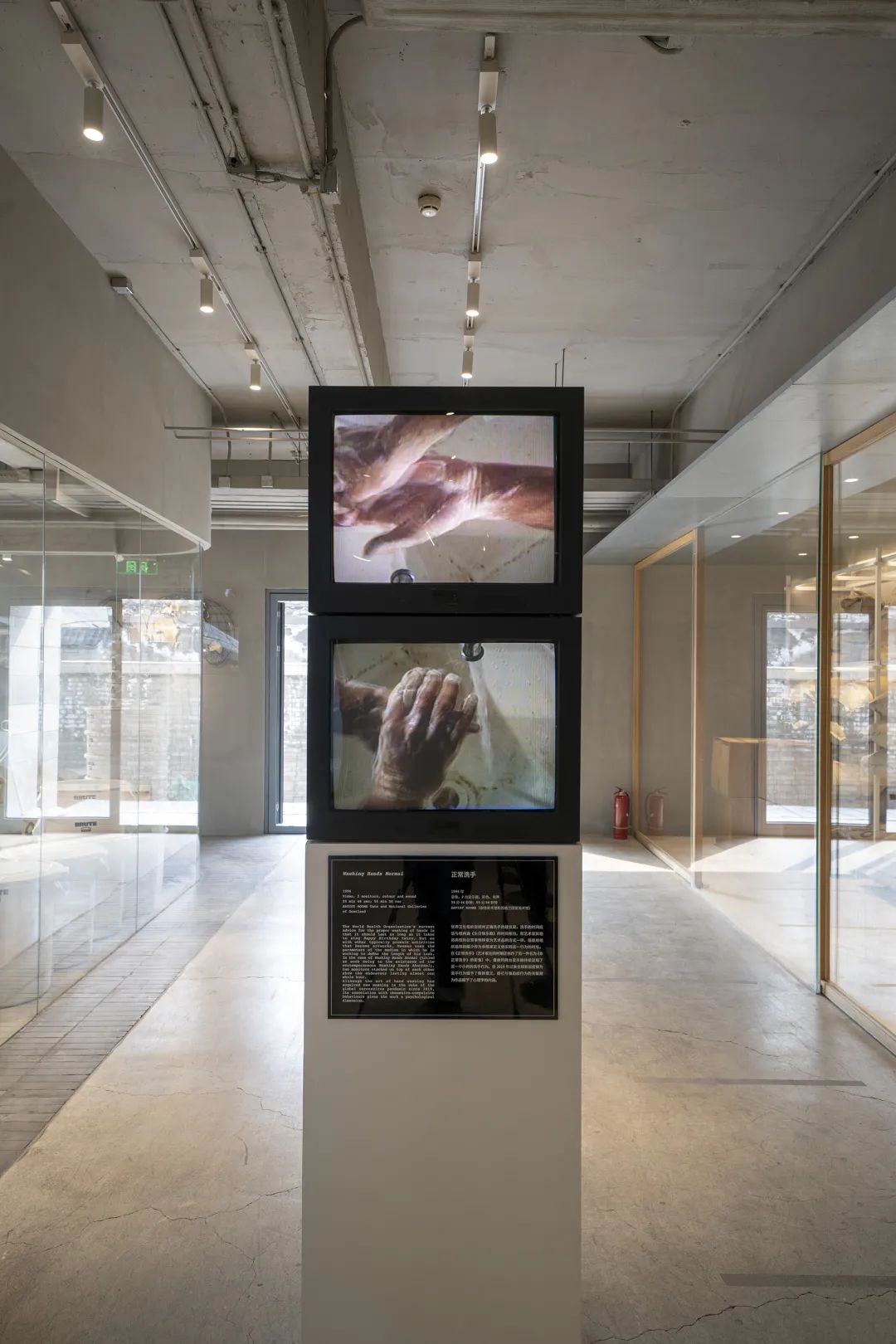
Exhibition View
At the entrance of the exhibition, there is a double-screen video Washing Hands Normal (1996), which plays a nearly one-hour hand-washing video on a loop. Washing hands is perhaps the most familiar case of obsessive-compulsive neurosis, clearly showing how the subject can indulge in fantasies and recreate a “washing hands = health” identity relationship. But with the influence from the pandemic, the structure of this obsessive-compulsive disorder is indeed alluring. In another dimly lit room, One Hundred Live and Die (1984) is a hysterical repetition. The flashing neon lights almost automatically induce us to repeat the information as the viewing time prolongs, and the repetition here represents an automatic processing of alienation. A mirror wall has been subtly designed in this room, which on the one hand creates a typical punch-in sanctuary, and on the other hand, mirroring is used to help us reconstruct the imagination of narcissism and identity, to some extent the two are the same thing, for today’s audience, raising the cell phone is an effective defense mechanism when we feel any discomfort in the exhibition.
 One Hundred Live and Die, 1984 ? 2022 Bruce Nauman / Artists Rights Society (ARS)
One Hundred Live and Die, 1984 ? 2022 Bruce Nauman / Artists Rights Society (ARS)
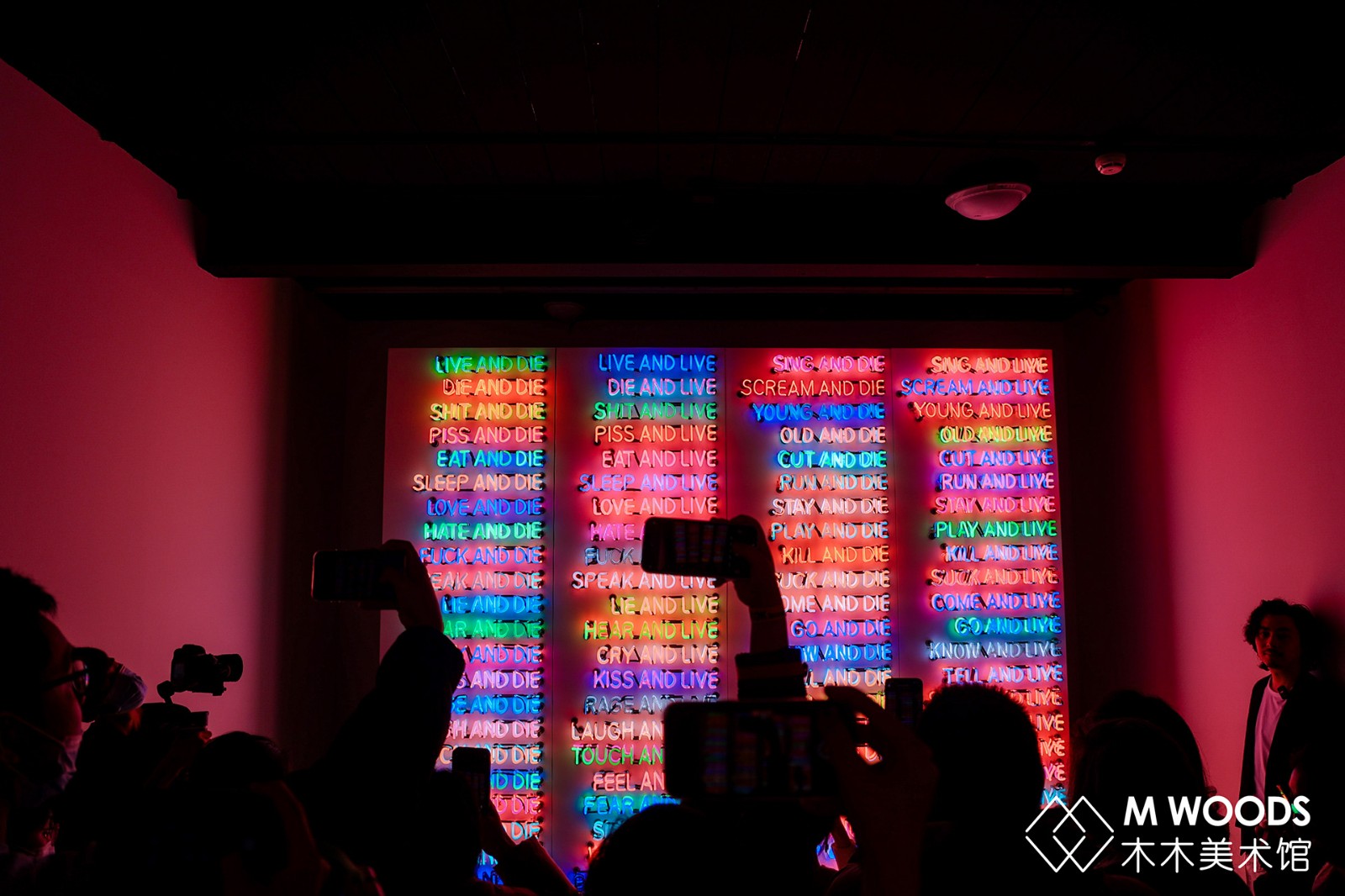 Exhibition View
Exhibition View
In an early interview, Nauman mentioned, [Some of the works] try to create a tense situation, which he thinks has to do with his fear of self-disclosure—he can only give so much, if he walks farther, it will bring something, or do something that will derail him even more. We’ve all gone so far that we’re afraid of exposing ourselves. On the one hand, we really want to expose information, but on the other hand, we are afraid to let others know. Nauman honestly reveals a certain type of vulnerability, by brutally stripping himself of control, he makes us see that men, white men, etc. benefit from the myth of sexual identity which is constructed as an inhospitable shell for everyone—including the supposed beneficiaries of this “privilege”—and makes violence and trauma possible for anyone.
 SW 99073 The True Artist Helps the World by Revealing Mystic Truths (Window or Wall Sign), 1967 ? 2022 Bruce Nauman / Artists Rights Society (ARS)
SW 99073 The True Artist Helps the World by Revealing Mystic Truths (Window or Wall Sign), 1967 ? 2022 Bruce Nauman / Artists Rights Society (ARS)
Through rebellion and honesty, Nauman’s work presents a subjective experience of late capitalism in terms of forbearance, submission, and obedience. But today, do these images, sounds, installations—together with the large installation of the museum itself—are also subject to the culture of landscape? The exhibition itself does not answer, as the title “OK OK OK” suggests, which can be read as either a critical irony or a symptom of obsessive repetition.
The exhibition will remain on view till June 12, 2022.
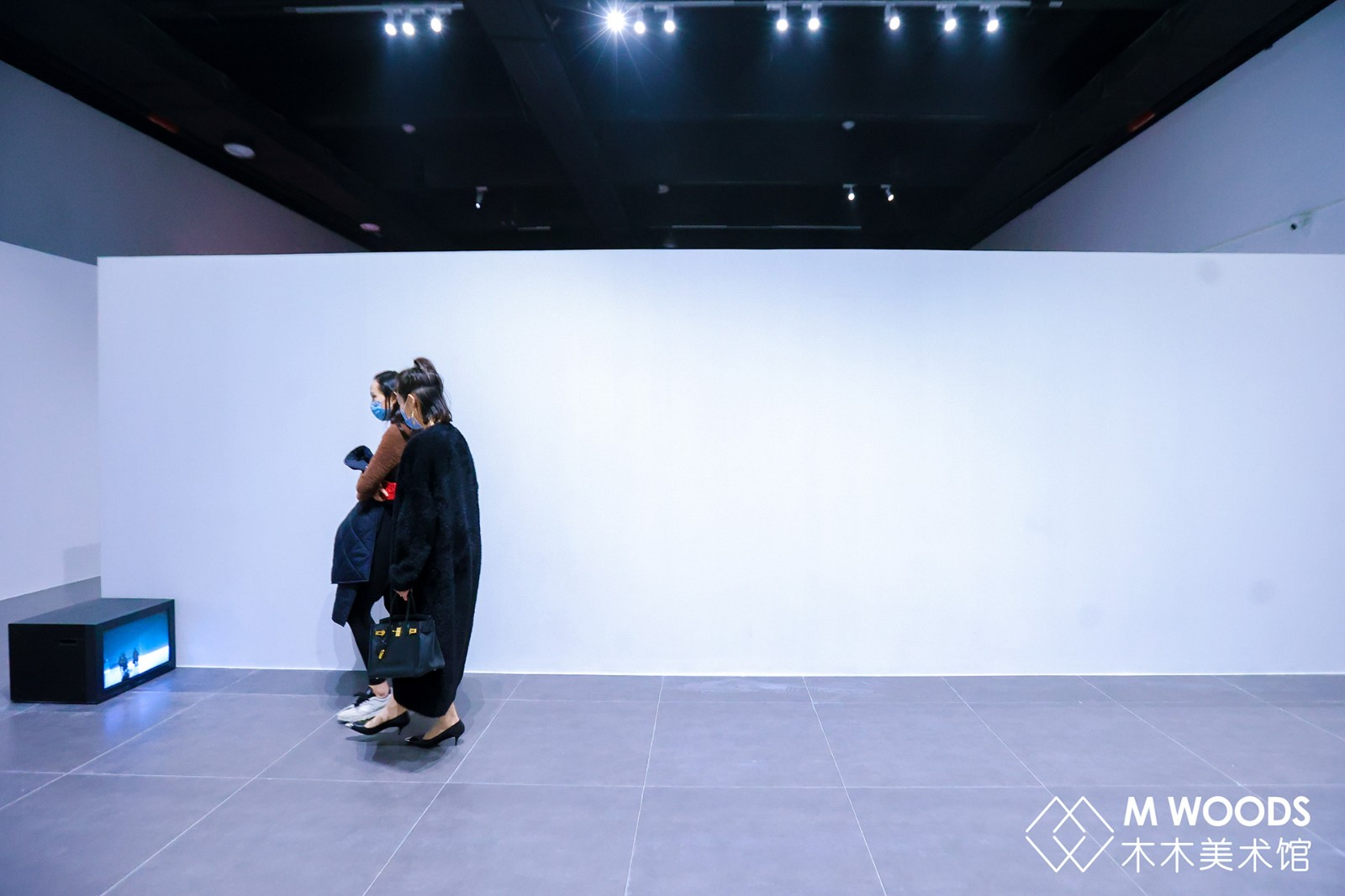 Exhibition View Text by Luo Yifei, ed. and trans. by Sue/CAFA ART INFO
Exhibition View Text by Luo Yifei, ed. and trans. by Sue/CAFA ART INFO
Image Courtesy M WOODS Museum.
About the exhibition
Dates: 11 March 2022 – 11 June 2022
Curated at M WOODS by Victor Wang, Artistic Director and Chief Curator
Curated at Tate Modern by Andrea Lissoni, former Senior Curator, International Art (Film), Tate Modern; Nicholas Serota, former Director, Tate, and Katy Wan, Assistant Curator, International Art, Tate Modern.
Venue: M WOODS Hutong




























